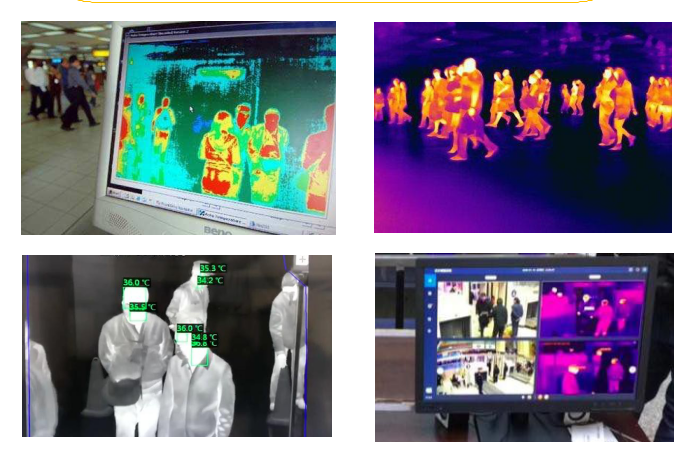With the wake of global COVID-19 outbreak which is also declared as a pandemic and world health emergency, governments are seriously looking forward to preventing the spread of this infection and looking for tools to stop or slow down the effect. Though there are no thermal cameras that can diagnose Coronavirus yet, there are still some tools that can detect elevated body temperature and skin temperature in public places with individual screening. If the skin temperature around the forehead and corner of the eye is above average, the person may have to undergo further screening.
People who are identified with elevated body temperature go for further screening with specific diagnostic tests. It can significantly reduce or slow down the spread of infections and viruses. A lot of institutions like businesses, transport facilities, factories, and emergency responders have been using thermal screening to detect elevated body temperature to protect the people and staff.
Airports and railway stations have employed a fever monitoring system for the screening of staff and passengers properly. At airports and in other public areas, screening procedures are the first step to detect potential infection. It is the fast way to screen for individuals who can be sick and they should be followed up before authorities choose to quarantine them.

Why does body temperature matter a lot?
Measuring body temperature is very important for medical reasons. Changes in body temperature are the symptom of a lot of diseases. In the same way, it is easy to monitor the course of some diseases by tracking body temperature. The physician evaluates the efficiency of treatment. Fever is a very common symptom of COVID-19 which results in increased body temperature.
What is needed to measure body temperature?
Basically, it goes without saying that body temperature measurement relies on where it is done. There is no exact normal temperature irrespective of common belief. In fact, the body temperature of a healthy person varies with time and activity in daily life. A usual difference of 0.5 degree Celsius in temperature is normal in rectal measurement when the evening is hot. Usually, body temperature is increased after exercise.
The difference roughly lies in between surface and core temperature, where skin temperature is measured and mixed temperature is tracked between ambient temperature and core temperature of the body. The thermometer is put in the body cavity to measure the core temperature which results in mucous tissue temperature.
How accurate temperature readings can be?
The difference should be essentially measured between clinical accuracy in using the thermometer and technical accuracy of the tool itself while taking temperature. To guarantee the quality of the thermometer, the technical accuracy is determined in ideal conditions while considering the technical standards. Top-quality thermometers are known to have around +0.1°C.
Accuracy in usage varies and it shouldn’t be confused with technical accuracy. The human body temperatures rely on the location of measurement and time. It can also vary because of thermometer malfunction and psychological reasons. The accuracy can be increased significantly by following the instructions and applying the thermometer properly.
Where to screen temperature?
The thermometer is inserted into the rectum to get the most accurate core temperature. It is very accurate and the normal range goes from 36.6°C to 38°C. The oral measurement is done in the cheek or under the tongue. Both types of measurements undermine the rectal one by around 0.3 to 0.8 degrees Celsius.
The groin and armpit measurement is the only type of surface measurement which is clinically used. To reduce the influence of ambient temperature, the limb is pressed off the body. But the success rate is limited as it has a con that it takes a long time to measure. The axillary measurement in adults is comparatively lower than rectal measurement by around 0.5 to 1.5 degrees Celsius. These underestimates are a lot smaller in babies as compared to rectal temperature.
Infrared thermometers track the infrared energy from ears and nearby tissue. On the other side, forehead temperature screening systems measure the heat from the forehead. It collects the readings through the lens and turns it into the exact value.






